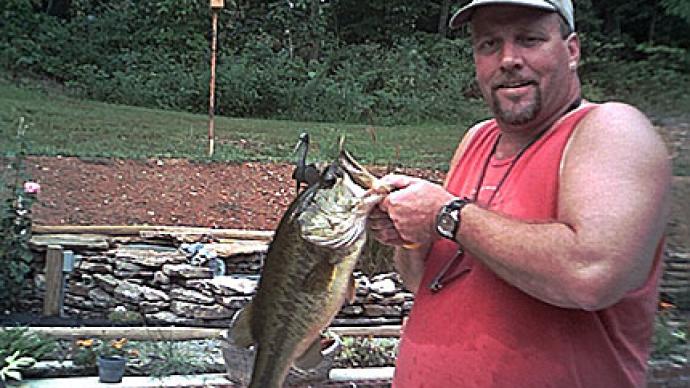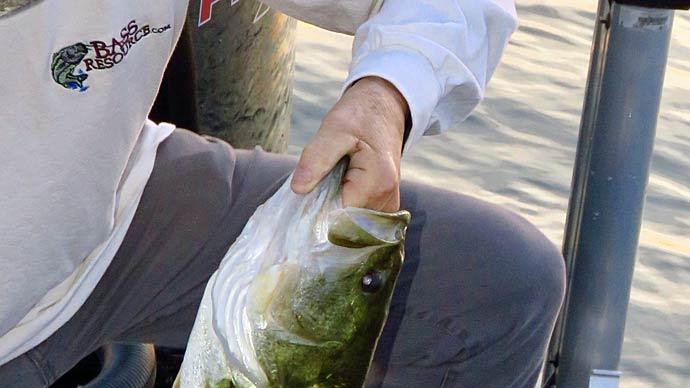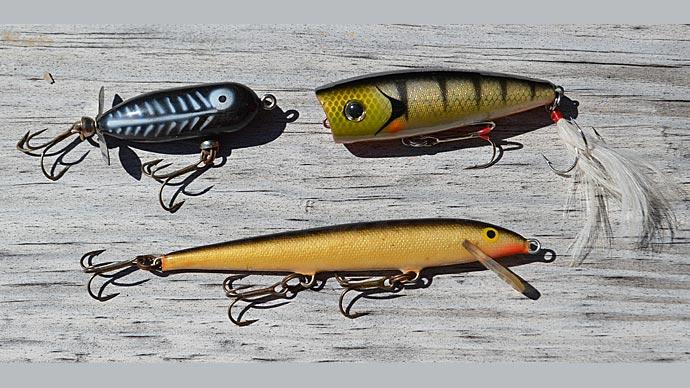
There is nothing like a bass hitting a topwater bait. There are many different types and brands of lures out there, and it can be confusing too when to throw what type of bait. Like any other bait, topwater baits have a time and place to be fished. It is up to you to determine what type of bait to throw when. This is usually learned through trial and error, but hopefully, I can clear up some of this confusion. This first article will discuss popper baits in a series of how-to articles on topwater baits.
Popper-type baits have always been one of my favorite styles of topwaters. One of my all-time favorites is the Rebel Pop-R. This bait at one time was taken out of production, but demand from tournament pros made Rebel bring it back.
There are many other brands of poppers out there, and all are not created equal. Each brand seems to have characteristics that make it equally compelling. The other poppers that I have fallen in love with are the SPRO E-Pop and the Storm Arashi Cover Pop.
All three of these baits have unique characteristics, including blooping, spitting, and popping, and a combination of the three of these.
I never fish a Pop-R right out of the package. There are several modifications I perform on it. These modifications come from years of fishing this bait under various conditions.
I first remove the factory hooks and split rings, including the rear buck tailer hook. I replace the split rings with a quality brand made of brass or stainless to not rust. I add two split rings to the rear of the bait (I will explain why shortly).
Now comes the change that I feel has made all the difference in the world to the productivity of this bait. Using Daiichi Death Trap Treble Hooks, I hand-tie white hackle onto the hook. Unlike bucktail, the hackle breaths in the water make the bait even more life-like. Lately, I've been tying the hackle on Daiichi's Bleeding Bait Hooks, which I feel makes a world of difference. I feel the Bleeding Bait Hooks make the most reluctant bass to strike.
On the P65 Pop-R, the bait comes with size six hooks. One other little trick is to use a size four hook on the rear of the bait, which increases your strike-to-hook ratio.
The reason why I add a second split ring to the rear hook has two purposes: 1. It makes the bait sit almost perpendicular in the water, making the action and sound of this bait irresistible to the bass. 2. Adding the second split ring makes the bait sit lower in the water, and I feel this helps me land those short-striking fish that is common when fishing this bait.
As far as modifying the other poppers, the only thing that I have started doing is using the hand-tied Daiichi Bleeding Bait Hook with a feather on the rear. I believe that the Bleeding Bait Hooks have made a tremendous impact on all aspects of my fishing. Walleye fishermen have been using colored hooks for years, so it's about time to steal a page out of their book.
Action
When talking about Poppers, most fishermen feel that these baits perform a popping action. I feel other actions make these baits attractive to bass, which varies by the bait you are using. Again, these are actions that work for me. My best advice is to try them with an open mind and always be willing to experiment to see what works best for you.
Pop-R: After making the modifications I described above, this bait will now make the loudest blooping sound of any bait I have found. Many like to fish this bait so that it spits water, but I feel other baits perform that action much better than the Pop-R. I like the blooping action when the fish are not very active. This blooping sound draws fish from long distances, including very deep water. I have also found that I get the best blooping action when the water is somewhat calm.
SPRO E-Pop: As the name indicates, this bait is the ultimate bait to use when you want the bait to spit or throw water. When would you want this type of action? I have found the spitting action works best when the bass is active and chasing baitfish. This is a great schooling bass bait. This bait will also draw bass out of deep water. I work this bait in calm to choppy water.
Storm Arashi Cover Pop: This is one of those crossover baits that have the features of both the Pop-R and E-Pop. This bait sits in the water with part of its mouth underwater, ready to bloop or spit depending on how hard you work the bait. I have had great success with this bait in calm and choppy water.
Tackle
I recommend baitcasting tackle for fishing all of the baits mentioned. There are a few things to remember about choosing tackle for fishing topwater baits. The action you want to impart to the bait will determine the tackle; the rod with the correct action should be used.
For imparting the spitting action, choose a rod with a moderate-fast action with medium power. The moderate-fast action of this rod will directly affect the spitting action of the bait with little effort. Like a medium-heavy casting rod, you want a rod with a little more give for the blooping action.
Remember the difference in the action and power of a fishing rod: Action is how a rod bends. Moderate-Fast Action means the upper ½ to 1/3 of the rod will bend. That is why the medium-heavy rod would be ideal for making the bait spit.
The rod's power is how much pressure is needed to get the rod to bend. This particular rod needs medium-heavy pressure to bend the rod.
When fishing topwater baits, one thing to remember is to wait until you feel the fish before sweeping the rod to the side. It's not setting the hook, so I'm using the rod to fight the fish, not to set the hook. So in the case of fishing poppers, I'm more concerned with rod action than the power. But when fishing poppers around heavy cover, I would be concerned about the rod's power to keep the bass out of the cover.
I recommend using a quality baitcast reel. I like a reel with a 5.2 gear ratio. That means the higher the gear ratio, the faster it reels in.
As far as line goes, I like using 12-17 pound test McCoy "Mean Green" Line. Some anglers like using fluorocarbon or braided lines when fishing topwater. There are two reasons why I don't: 1. Fluorocarbon line sinks, which takes away from the built-in action of the bait. 2. Braided line has zero stretch, resulting in the angler overworking the bait without realizing it.
Bass fishermen can steal a page from the fly fishermen by coating the last two to three feet of line with fly line dressing, which will make the line float, making the bait easier to work.
Technique
The technique that I use for all three baits is very similar. Basically, with the Pop-R, I cast out and let the bait sit for, say 15-20 seconds, then give it a hard jerk. If the bait is modified correctly, you should hear a loud bloop. I then let it sit for, say, 10 seconds, then give it a hard jerk. This is an excellent technique for using around submerged vegetation.
I have also had good luck throwing it into holes in matted vegetation. When doing that, I will let the bait sit much longer than if I were fishing open water situations.
I do not work this bait back to the boat. I usually work it to a point where I feel it is out of the strike zone, which your fishing situation can only determine.
When fishing the SPRO E-Pop, the technique I use is faster than I work a Pop-R. I use this bait for covering water. Remember, the action I'm looking for out of this bait is a spitting action. The faster I work the bait, the more it spits. Let the bass tell you how fast to work the bait.
One critical point to bring out is that when you are working this bait fast, and a bass strikes and misses the bait, keep the bait moving! Do not stop the bait! I learned this from experience. The fish will not strike again as soon as you stop the bait.
The Storm Arashi Cover Pop is the bait that I use both techniques described above. It has a softened blooping and spitting action. If I miss fish on the first two baits, I will switch to the Cover Pop and see my strike-to-hook-up ratio increase.
Color
I keep my color selection of poppers relatively simple. I use two factors to determine which color I use. 1. water color 2. predominate baitfish.
I like using more natural colored baits like silver or white when the water is clear. If the water is stained, firetiger is my go-to color. I will also use firetiger in clear water if the lake or river I'm fishing has a lot of perch in it. If I see a lot of baitfish activity on the surface, I will usually fish a natural colored bait.
There is one thing for sure - there is nothing like a bass blowing up on a topwater bait. Hopefully, by following some of the tips I outlined, you can experience that same thrill of a bass exploding on top of the water.




